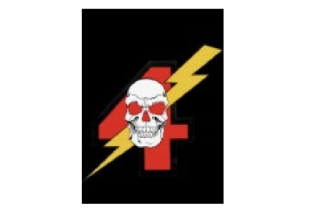Gothic Subculture Not to Blame for Violence, Its Adherents Say
The deadly school rampage by two black-clothed Colorado students Tuesday has drawn attention to the Gothic subculture, a scene characterized by a macabre fascination with all things dark and dramatic.
An alternative style that grew out of the punk scene of the late 1970s, the Goth scene is embraced by many alienated youths who express themselves by donning black clothes and heavy makeup.
Although it’s unclear if the shooters at Columbine High School were full-fledged Goths, it appears that some members of their so-called Trench Coat Mafia bore some of the trappings of the subculture, darkening their nails black and painting their faces white.
But that is where the relationship between those students and Goths most likely ends, experts said. Although Goth culture embraces the occult, it is not considered a physically violent fringe but rather a style of sinister music and clothes that gives disaffected suburban teenagers a group with which they can identify.
“The scene does have an attraction to death . . . but not murder, not killing,” said Jack Dean, owner of Goth clubs in Los Angeles, New York and New Orleans. “The imagery really relates to the fact that we’re all going to meet the same end so you might as well live your life in the grandest and fullest manner that you can.”
Nancy Smith, owner of the Melrose Avenue curio shop Necromance, who says about 20% of her customers are Goths, adds that she does not “associate Goths with violence.”
“I think it’s to have a different personality,” she said. “They don’t want to be the jocks, the cheerleaders, on the spelling team.
“Parents should be concerned when their kids are on the Internet learning how to make bombs, not because they’re painting their fingernails black and wearing makeup.”
As the public casts about for answers to the horrific shootings in Littleton, many Goths said the lifestyle should not be blamed, arguing that their fascination with the dark side is a harmless form of self-expression.
“From the description I’ve heard, those two kids don’t sound like any of the Goths I know,” said Ben Enabe, a 22-year-old Canoga Park resident and self-described Goth.
According to Enabe, Goths are a diverse group who gravitate toward the lifestyle because it puts them on the outer reaches of society.
“I would say most Goths are quiet, smart and they just maybe think different than most of their peers,” he said. “They don’t want to fit in necessarily, but that doesn’t make them bad people.
“I hope people don’t think this lifestyle leads to things like what happened in Colorado.”
School psychologists said that belonging to a particular social group such as Goths is not necessarily an indicator of a potential problem. Rather, said Lee Huff, school psychologist at Fountain Valley High School, parents and teachers should be concerned about a combination of signs such as aggressiveness and violent imagery in writings for school.
One of the fallouts of the Colorado shooting, youths fear, is that it will increase tensions between Goths and other groups on campuses.
“People are going to think that kids who dress in black are going to do something drastic like shoot somebody,” said David Bloch, an Agoura High School junior who hangs out with both Goths and athletes.
Peter Thomas, the owner of Retail Slut on Melrose Avenue, said what characterizes youth in the Goth scene is the music--dark, brooding bands like The Cure, Bad Religion and Christian Death that lean heavily on Gothic archetypes in their lyrics and concerts--and the dress, which encompasses everything from bat wings to black vinyl pants and is topped off by white makeup that makes Goths look like ghosts.
Thomas said there is violence in the Goth world, but it’s not normally expressed outwardly, as it was in Colorado. “There are a lot of kids who don’t feel good about themselves. That leads to a lot of self-mutilation, I think, and sometimes even suicide or attempted suicide.”
Back in the late 1970s, Goth was a gloomy art-school spinoff of punk rock. Like most alternative scenes, it was born out of youthful rebellion, angst, frustration, depression and a passion for art and music. The music of choice was commonly referred to as Death Rock, and bands like Bauhaus, Siouxsie and the Banshees, The Damned and Sisters of Mercy reigned supreme.
Joseph Brooks, promoter of L.A.’s first Gothic club, The Veil, defended the music: “The Goth scene is filled with great lovers of life, not just people who are obsessed with death.” The shooters “were confused and deeply disturbed, and to lump them in with the Gothic scene is to not address whatever real problems they were having,” he said.
A small faction of today’s Goth scene influenced by industrial music is very militant, Goth music experts acknowledged.
But the subculture, in general, does not promote violence against others and encourages people to connect through music and artistic expression, musicians said.
Fate Fatal, whose group, the Deep Eynde, is at the forefront of L.A.’s underground Gothic music scene, said he is offended at the notion that because they dressed in black and wore dark nail polish, the Colorado shooters will be lumped in with the Gothic set.
“Mark my words, there will be a witch hunt,” Fatal said. “They’ll blame it on the music, just like they tried to blame suicide on Black Sabbath and the shootings of cops on Ice T.”
*
Times staff writers Matthew Ebnet, Jeffrey Gettleman, Kurt Streeter and Kastle Waserman and correspondent Harrison Sheppard contributed to this report.
More to Read
Sign up for Essential California
The most important California stories and recommendations in your inbox every morning.
You may occasionally receive promotional content from the Los Angeles Times.










